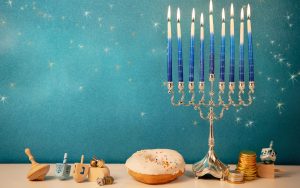In Judaism, Shabbat is both our day off from the trials and labour of the working week, and our opportunity to reconnect to the things in life that are most important to us. Instead of focusing on our phones, work, and traffic, we get a whole day to instead zoom in on our families, great food, and of course, the Torah.
Every Shabbat morning, a portion of the Torah – known in Hebrew as a parasha or sidra – is read aloud in the synagogue. Due to the Jewish year’s careful solar-lunar calendar, the same portions are always read surrounding the same holidays and other Jewish events, giving rise to what are known as “special Shabbatot”.
These special weekends occur at strategic points in the year, when the Torah’s message offers a particularly apt insight into the Jewish calendar, or when a historical occurrence in the Torah is given a date and is coincidentally read at the same time of year.
The next two Shabbatot are example of this. They are called Shabbat Shekalim and Shabbat Zachor, and are tied to the Hebrew month of Adar, which this year begins on Wednesday February 14th.
Shabbat Shekalim is the name of the Shabbat which falls the week before the beginning of Adar. The Torah portion talks about the Biblical tithe that all men of serving age were required to pay to the travelling temple. Each was required to give half a silver shekel, both as a donation and as a national consensus.
Like all other Biblical taxes, it was required to be paid by the first day of Nissan, and notices were sent out to remind the people a month previously – on the first of Adar. This makes this Torah portion a perfect calendar match for the beginning of Adar.
The Shabbat before Purim is known as Shabbat Zachor. It includes the story of Amalek attacking the newly-freed Israelites, and ends with the command to remember Amalek. It’s read the week preceding Purim as there is a tradition that Haman, the murderous, jealous villain of the Purim story, was descended from the murderous Amalekite tribe.
This means it chimes in perfectly with the theme of Purim, and remembering the attacks launched against the Jews by Haman and other legendary Amalekites.












